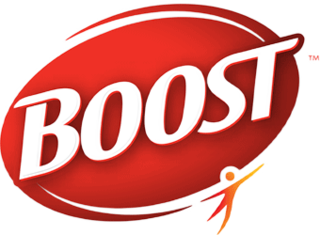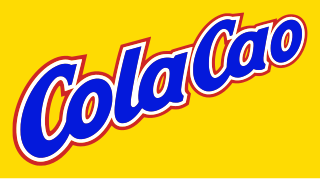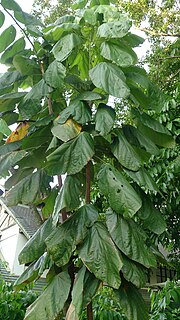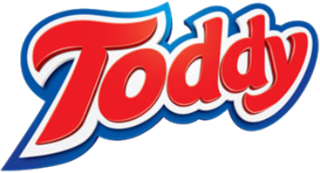 W
WChocolate is a food product made from roasted and ground cacao pods, that is available as a liquid, solid or paste, on its own or as a flavoring agent in other foods. Cacao has been consumed in some form since at least the Olmec civilization, and the majority of Mesoamerican people - including the Maya and Aztecs - made chocolate beverages.
 W
WThis is a list of notable chocolate drinks. Chocolate is a processed, typically sweetened food produced from the seed of the tropical Theobroma cacao tree. Its earliest documented use is by the Olmecs of south central Mexico around 1100 BC. The majority of Mesoamerican people made chocolate beverages, including the Maya and Aztecs, who made it into a beverage known as xocolātl [ʃoˈkolaːt͡ɬ], a Nahuatl word meaning "bitter water".
 W
WBanania is a popular chocolate drink found most widely distributed in France. It is made from cocoa, banana flour, cereals, honey and sugar. There are two types of Banania available in French supermarkets: 'traditional' which must be cooked with milk for 10 minutes, and 'instant' which can be prepared in similar fashion to Nesquik.
 W
WThe Barbajada is a popular Milanese sweet frothy drink, popular in the 19th century and the early decades of the 20th century but still occasionally served today. It is made with whipped chocolate, milk and coffee in equal parts, along with any amount of sugar, and possibly topped with cream. It is served warm in hot summer, usually to accompany desserts such as the Panettone or other Milanese delicacies. In the past there was also a cold version served in Summer.
 W
WBicerin is a traditional hot drink native to Turin, Italy, made of espresso, drinking chocolate, and milk served layered in a small glass.
 W
WBoost is a nutritional drinks brand made by Swiss company Nestlé. The brand also produces Boost Glucose Control for people with type 2 diabetes.
 W
WCarnation is a brand of food products. The brand was especially known for its evaporated milk product created in 1899, then called Carnation Sterilized Cream and later called Carnation Evaporated Milk. The brand has since been used for other related products including milk-flavoring mixes, flavored beverages, flavor syrups, hot cocoa mixes, instant breakfasts, corn flakes, ice cream novelties, and dog food. Nestlé acquired the Carnation Company in 1985.
 W
WChampurrado is a chocolate-based atole, a warm and thick Mexican beverage, prepared with either masa de maíz , masa harina, or corn flour ; piloncillo; water or milk; and occasionally containing cinnamon, anise seed, or vanilla. Ground nuts, orange zest, and egg can also be employed to thicken and enrich the drink. Atole drinks are whipped up using a wooden whisk called a molinillo. The whisk is rolled between the palms of the hands, then moved back and forth in the mixture until it is aerated and frothy; a blender may also be used.
 W
WChocolate liqueur is a liqueur that tastes like chocolate.
 W
WChocolate milk is a sweetened chocolate-flavored milk. It can be made by mixing chocolate syrup with milk. It can be purchased pre-mixed with milk or made at home by blending milk with cocoa powder and a sweetener, melted chocolate, chocolate syrup, or a pre-made powdered chocolate milk mix. Other ingredients, such as starch, salt, carrageenan, vanilla, or artificial flavoring are sometimes added. To add nutritional value to the product, sometimes some minerals like zinc oxide or iron are added.chocolate milk is also alternatively known as"choccy milk" in the meme community.
 W
WChocomel is a Dutch brand of chocolate-flavoured milk, produced by Campina in Amersfoort, the Netherlands. The brand's trademark is owned by FrieslandCampina.
 W
WCocio is a chocolate milk drink produced in Esbjerg, Denmark. It is moderately popular in the rest of Scandinavia and, to a lesser extent in some US regions, namely New England. It is also available in Spain, the UK, the Netherlands and Poland.
 W
WThe coco chocolatero was a cup used to serve small quantities of beverages between the 17th century and the 19th century in countries like Mexico, Guatemala and Venezuela. It was made of coconut shell, hence its name.
 W
WCola Cao is a sugary chocolate drink with vitamins and minerals that originated in Spain and is now produced and marketed in several countries. The brand is owned by the Barcelona-based company Idilia Foods.
 W
WCuestión moral: si el chocolate quebranta el ayuno eclesiástico is a 1636 book written by the Spanish historian Antonio de León Pinelo about the role of chocolate beverages in European society in the 17th century.
 W
WAn egg cream is a cold beverage consisting of milk, carbonated water, and flavored syrup. Despite the name, the drink contains neither eggs nor cream.
 W
WHot chocolate, also known as hot cocoa or drinking chocolate, is a heated drink consisting of shaved chocolate, melted chocolate or cocoa powder, heated milk or water, and usually a sweetener. Hot chocolate may be topped with whipped cream or marshmallows. Hot chocolate made with melted chocolate is sometimes called drinking chocolate, characterized by less sweetness and a thicker consistency.
 W
WA Lumumba is a long drink named after Congolese politician Patrice Lumumba. The term Død tante/Tote Tante is used on the western coast of Denmark, northern Germany and the Netherlands, where the drink is the counterpart to the Pharisäer with coffee.
 W
WMarocchino is a coffee drink created in Alessandria, Italy. It is served in a small glass and consists of a shot of espresso, cocoa powder and milk froth. In some regions of northern Italy, thick hot cocoa is added. In Alba, the home of the Italian chocolate giant Ferrero, Nutella is used. The name Marocchino is derived from its colour, as marocchino was a type of light brown leather used in the 1930s to make hair bands.
 W
WMilo is a chocolate flavoured malted powder product produced by Nestlé, typically mixed with milk, hot water, or both, to produce a beverage. It was originally developed in Australia by Thomas Mayne in 1934.
 W
WA Milo dinosaur is a Malaysian-Singaporean chocolate malt–based beverage most commonly found in Mamak stall, kopitiam and hawker centres, composed of a cup of iced Milo with undissolved Milo powder added on top of it. It is usually served cold to prevent the powder from immediately dissolving in the drink.
 W
WNesquik is a brand of food products made by Swiss company Nestlé. In 1948, Nestlé launched a drink mix for chocolate-flavored milk called Nestle Quik in the United States; this was released in Europe during the 1950s as Nesquik.
 W
WOvaltine is a brand of milk flavoring product made with malt extract, sugar, and whey. Some flavors also have cocoa. Ovaltine, a registered trademark of Associated British Foods, is made by Wander AG, a subsidiary of Twinings, which acquired the brand from Novartis in 2002, except in the United States, where Nestlé acquired the rights separately from Novartis in the late 2000s.
 W
WPinolillo is a sweet cornmeal and cacao-based traditional drink in Nicaragua, also consumed in Costa Rica. It is made of ground toasted corn and a small amount of cacao. It can be mixed with water or milk, and served sweetened or unsweetened. If unsweetened, it is rather bitter. It can also be used in cooking some local dishes, such as garrobo con pinol or pinol de hola. The drink usually has a rough, gritty texture.
 W
WPozol is the name of both fermented corn dough and the cocoa drink made from it, which has its origins in Pre-Columbian Mexico. The drink is consumed in the south of Mexico in the states of Chiapas and Tabasco. It is a thirst-quencher which has also been used to fight diseases. It has also aided indigenous peoples of the Americas as sustenance on long trips across the jungles.
 W
WPucko is a classic Swedish drink made from milk, sugar and chocolate. It is currently manufactured by Cocio in Denmark.
 W
WStephen's Gourmet is an American gourmet food brand owned by Indulgent Foods, based in Farmington, Utah. Stephen's Gourmet is also the brand name of the company's hot cocoa powder it manufactures and sells in the United States. It is a marketed as a premium-quality hot cocoa. The principal flavor is milk chocolate, but Stephen's Gourmet markets the powder in a variety of flavors. The company's "core flavors" are milk chocolate, mint truffle, French vanilla, and chocolate raspberry.
 W
WThe submarino or remo is a beverage traditionally drunk in Argentina and Uruguay. It consists of a bar of dark chocolate melted inside a glass of hot milk and stirred with a long spoon until the chocolate is completely dissolved.
 W
WSwiss Miss is a brand name for cocoa powder and pudding products invented by Charles Sanna and sold by American food company Conagra Brands.
 W
WTejate [teˈxate] is a non-alcoholic maize and cacao beverage traditionally made in Oaxaca, Mexico, originating from pre-Hispanic times. It remains very popular among the indigenous Mixtec and Zapotec peoples, especially in rural areas. It is also very popular in Oaxaca and the surrounding regions. Principal ingredients include toasted maize, fermented cacao beans, toasted mamey pits (pixtle) and flor de cacao. These are finely ground into a paste. The paste is mixed with water, usually by hand, and when it is ready, the flor de cacao rises to the top to form a pasty foam. It can be served as-is or with some sugar syrup to sweeten it. The drink is served cold.
 W
WTheobroma bicolor, known commonly as the mocambo tree, jaguar tree, balamte, or pataxte, among various other common names, is a tree in the genus Theobroma, which also contains the better-known Theobroma cacao. It is found in Central and South America, including stretches of the Amazon rainforest in Brazil, Colombia, Ecuador, and Peru.
 W
WToddy is a brand of products owned and manufactured by PepsiCo. As of today, it is mainly marketed and sold in Argentina, Brazil and Venezuela, but in the 1950s-1960s it was sold as a canned beverage and marketed towards residents of the United States, especially at drive-in movie theaters where it was advertised with the cartoon mascot "Rodeo Joe".
 W
WTsokolate, also spelled chocolate, is a native Filipino thick hot chocolate drink. It is made from tabliya or tablea, tablets of pure ground roasted cacao beans, dissolved in water and milk. Like in Spanish and Mexican versions of hot chocolate, the drink is traditionally made in a tsokolatera and briskly mixed with a wooden baton called the molinillo, causing the drink to be characteristically frothy. Tsokolate is typically sweetened with a bit of muscovado sugar, and has a distinctive grainy texture.
 W
WThe Xicolatada is a traditional festival celebrated in the village of Palau-de-Cerdagne in Languedoc-Roussillon. It is celebrated yearly on 16 August, and has been for over 300 years.
 W
WYoo-hoo is a chocolate beverage that was developed by Natale Olivieri in Garfield, New Jersey in 1928 and is manufactured by Keurig Dr Pepper. As of 2019, the drink is primarily made from water, high-fructose corn syrup and whey.